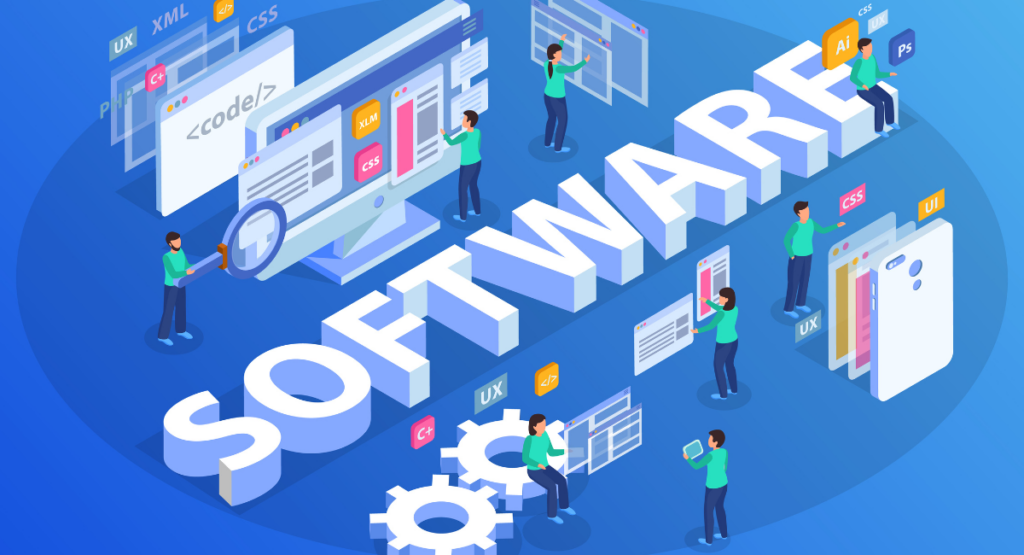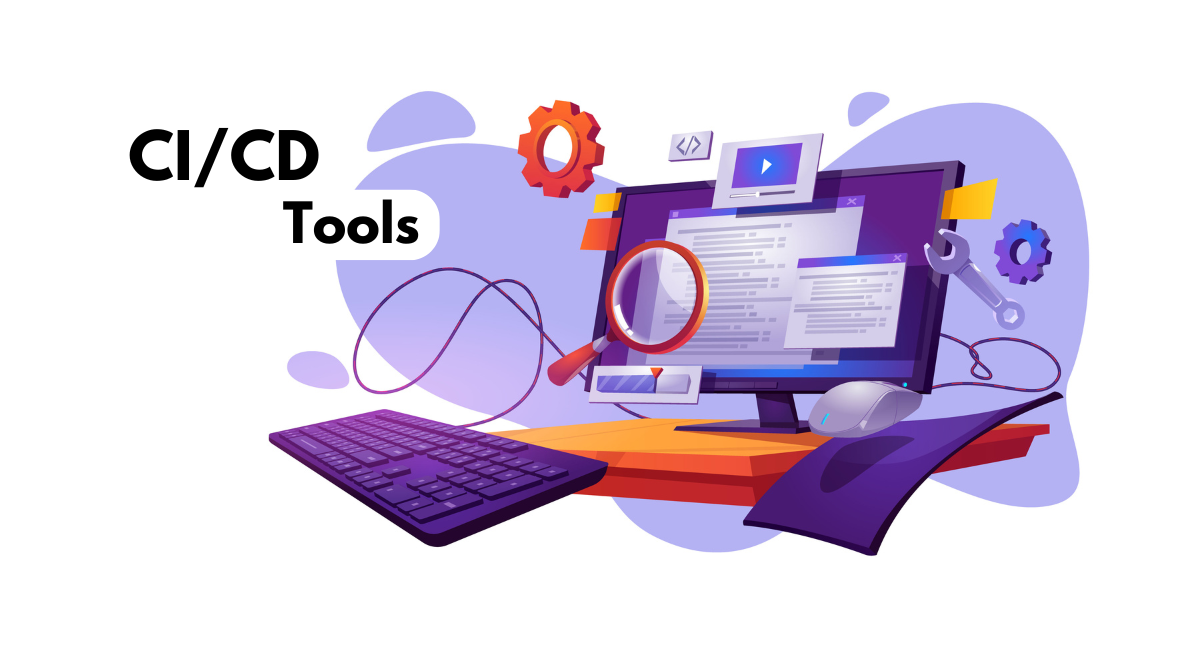In the fast-moving world, CI and CD become sine qua non for the systems; they are essential not only in achieving smooth, streamlined workflows but also in driving up the quality of output.
It enables CI/CD tools to automate relevant processes within the software delivery process, allowing the team to focus on rapid, efficient product development.
As we usher in 2024, knowledge of the best tools for CI/CD out there is important for optimization in the development cycle and competitiveness.
This guide offers CI/CD tools that are sure to have the greatest impact in the next several years due to enabling teams to speed up development and not miss out on accuracy or quality.
Overview of CI/CD Tools

CI/CD is a Continual Integration and Continual Deployment. It has become one of the essential methodologies in the modern way of software development that empowers developers to increase efficiency, improve code quality, and expedite the release process.
It is an automated way of integrating development and operations teams throughout the application lifecycle, starting from building the code to testing and deployment.
Importance of CI/CD Tools
CI/CD tools play a very crucial role in achieving a smoothly automated line of software production. They do this by merging the code into a central repository continuously.
This kind of proactive approach can help avoid downtime and improve product quality, as the bugs can be fixed before they reach the working environment.
With all these tools, release cycles are sped up, enabling companies to react to market changes and respond to customers at the same pace with a very stable and secure system.
Evolution of CI/CD in Software Development
Most fundamentally, CI/CD represents the game-changer in the evolution of the way products are developed and deployed. A traditional software update process was resource-intensive and error-prone, typically consisting of large periodic releases of changes.
As technology, and hence market demands changed, there was definitely a necessity to require more rapid and iterative changes with the development of CI, and hence CD practices.
These methodologies can nowadays benefit from the use of a whole raft of very sophisticated tools, which automate and facilitate all these processes, thereby making continuous delivery a realistic proposition for many organizations.
Top 14 CI/CD Tools You Must Know in 2024
Jenkins
Jenkins is an open-source automation tool with a vast plugin ecosystem, which makes it highly adaptable for various development environments.
It supports both distributed and concurrent building/testing and offers an easy setup and configuration via its web interface. Jenkins is particularly valued for its robust community support and extensive plugin architecture.
GitLab CI/CD
GitLab CI/CD is built into GitLab, a web-based DevOps lifecycle tool. This tight integration provides a streamlined workflow that covers everything from code review and building to testing and deploying, all within a single interface.
GitLab CI/CD is known for its configuration simplicity through a YAML file and its scalability across different environments.
CircleCI
CircleCI excels in continuous integration for both web applications and mobile platforms. It offers rapid setup and high customizability via configuration-as-code.
Its ability to run multiple pipelines concurrently speeds up the testing and deployment processes, making it a popular choice among developers seeking efficiency and speed.
Travis CI
Travis CI is a web-based interface that offers happiness in testing and deploying by supporting a huge number of programming languages; it is integrated directly with Github.
Travis CI is among the most valuable services in terms of how simple it is to use and the speed at which it configures the automatic testing of new commits in a GitHub repository.
Bamboo
Designed by Atlassian, Bamboo works in excellent coordination with other tools, such as JIRA and Bitbucket, and provides professional build and deployment projects.
It offers complete and in-built features for building delivery pipelines, environment management capabilities, and dedicated support for testing frameworks comprehensive CI/CD choice for enterprises.
TeamCity
TeamCity, from JetBrains, is another of the popular build management and CI servers that is most appreciated for its wide support of multiple platforms and languages.
It is also popular due to its out-of-the-box continuous deployment capabilities. TeamCity provides on-the-fly build progress reporting with intuitive UI, and thus it is the most preferred tool for any team that needs improved visibility and real-time control.
Spinnaker
Spinnaker is an open-source, multi-cloud continuous delivery platform originally developed at Netflix. The platform supports deployment strategies that are overly complex; that is, it allows for canary releases.
It also fully integrates with leading cloud providers. Moreover, Spinnaker works out in managing releases efficiently over different cloud environments.
Azure DevOps
Azure DevOps provides developer services that enable teams to plan work, collaborate on code development, and build and deploy applications.
It offers an end-to-end DevOps toolchain for developing and deploying software. Its CI/CD features are robust, supporting automation across different environments.
GitHub Actions
GitHub Actions makes it easy to automate all your software workflows, now with CI/CD. It provides the flexibility to build, test, and deploy code right from GitHub, making it easy for developers to automate their workflows based upon their activity in GitHub repositories.
Buddy
Buddy allows for lightning-fast CI/CD and instant feedback using its myriad actions and pipelines. It is designed to reduce the entry threshold to DevOps with its straightforward user interface and pre-configured actions, enabling fast and reliable delivery of projects.
GoCD
GoCD highlights its focus on continuous delivery. Through its open-source platform, GoCD offers visibility into and control over the flow of your application from commit to deploy, with powerful pipeline modeling capabilities.
Concourse
Concourse is designed for teams that need a strong pipeline-centric approach. It is particularly known for its scalable and straightforward environment. Concourse treats pipelines as first-class citizens, making it highly effective for continuously deployed applications.
Buildkite
Buildkite is a flexible, scalable CI/CD platform that integrates with GitHub, Bitbucket, and GitLab. It provides a powerful agent that can be run on virtually any system, installing itself effectively into the existing development workflow.
Harness
Harness leverages the power of machine learning to automatically detect failures, rollbacks, and generate insights about deployments.
Its ability to automate the entire CI/CD process, using a unique verification methodology, makes it a standout tool for teams looking for intelligent deployment strategies.
Criteria for Selecting the Right CI/CD Tool

Choice of the right CI/CD tool can enhance the effectiveness and robustness required for the software development process. More and more development teams are interested in automated workflows.
Hence, the choice of a tool that accords with the organizational needs is important. Comparing the CI/CD tools for the key features will require that you make an informed decision.
Scalable
Another factor most considered in choosing a CI/CD tool is scalability. The need for a scalable CI/CD tool becomes more pressing with the increase in workload handled and the growth in the size of your development team, and, of course, without performance increase. Look for tools that offer:
- Flexible agent management: Capacity to dynamically adjust concurrent builds and tests based on demand.
- Cluster management: Features that ensure smooth deployment and management of applications across multiple environments.
- Load balancing: Capabilities that distribute processing and network loads efficiently.
The ability to scale up or down based on your needs without manual intervention significantly impacts productivity and cost-efficiency.
Integration Capabilities
How smoothly a CI/CD tool can integrate with other tools and services practicing in the software development lifecycle is primal.
A CI/CD tool's capacity to integrate with popular versioning control systems such as Git, SVN, Mercurial, well-known project management tools, database management systems, and cloud services is something we have to look out for. Key integration features one needs to consider include:
- Plugin support: Availability of a wide range of plug-ins for the extension of use in the CI/CD tool.
- API access: APIs are documented, with the ability to connect with other tools and services via custom integrations.
- Multi-platform support: support for other operating systems and environments implies that deployment can be done in a more versatile way.
The more integrations a CI/CD tool supports, the more one can have a smooth flow between different stages of development and deployment.
Security Features
With the increasing frequency of cyber threats, security is a top concern in CI/CD processes. A robust CI/CD tool should include strong security features that protect your code and maintain the integrity of the development pipeline. Essential security features include:
- Role-based access control: To limit access to sensitive operations and information based on user roles.
- Encryption: Secure storage and transmission of code and data.
- Audit trails: Detailed logging of all pipeline activities for monitoring and compliance purposes.
Implementing strong security measures within the CI/CD tool helps in safeguarding valuable software assets and complying with regulatory standards.
Future Trends in CI/CD Tools
CI/CD tools are improving rapidly as software development practices improve. Knowing the future trends in CI/CD tools can not only keep your organization ahead of competitors but make sure it stays at the forefront of technology change.
AI-driven Automation
The use of artificial intelligence is being embedded in the CI/CD pipeline to help increase automation and efficiency. AI-driven automation can be a way to:
- Predictive analytics: With the aid of historical data, one can make predictions and adjust workflows in ways that lead to the best possible performance.
- Intelligent test orchestration: Using AI algorithms, it chooses the order of running test cases based on changes to the codebase, thus reducing the resources needed for testing and, by extension, the amount of time taken for the exercise.
- Anomaly detection: By comparing patterns and finding discrepancies in the development or deployment process, it might signal different issues.
This is AI capability that will allow a much more proactive and intelligent management of the pipeline by increasing cycles of delivery not through oversight, as is the case with most present plans.
Serverless CI/CD
Serverless computing is disrupting the CI/CD game as it gets rid of the idea of managing servers and infrastructure. Serverless CI/CD centers around:
- Scalability and Cost. Provision resources automatically and scale resources up or down near the exact workload; payments are based on actual resource consumption.
- Simplified Configuration. Reduction in complexity to set up and maintain the CI/CD process. A developer, in turn, should give much more time to the process of coding itself rather than setting up infrastructure.
So this trend will be more beneficial to organizations that want to save operational costs and ease their operations.
Infrastructure as Code (IaC)
Infrastructure as Code (IaC) is gaining traction as a key component of modern CI/CD pipelines. It involves:
- Management of infrastructure through code: Automating the setup and tear-down of environments, ensuring consistency across different deployment stages.
- Version control and collaboration: Treating infrastructure setups as code that can be versioned and collaborated on just like application source code.
By integrating IaC into CI/CD tools, organizations can achieve faster, more reliable, and repeatable deployments, minimizing human errors associated with manual infrastructure management.
Conclusion
Recap of Top CI/CD Tools in 2024
This year has seen a diverse array of CI/CD tools that cater to different facets of the software development lifecycle. From Jenkins' flexibility with project environments to the robust, cloud-native infrastructure offered by GitLab CI and CircleCI, each tool brings something unique to the table.
GitHub Actions and Travis CI have embraced integration with other tools easily, while Bamboo and TeamCity offer high configurability for complex workflows.
Importance of Continuous Improvement in Software Development
It is for this reason that software development has attached great importance to the concept using a dynamic approach: continuous deployment, continuous integration.
Again, CI/CD does not only reduce the risks associated with the releases of products but additionally improves the general quality of a software product.
For example, Spinnaker and Argo CD are both tools for continuous delivery of cloud-native applications, and that flexibility and ability to change generally drives the business innovations that optimize user satisfaction.
Book a Demo and experience ContextQA testing platform in action with a complimentary, no-obligation session tailored to your business needs.
Final Thoughts on Embracing CI/CD for Enhanced Productivity
Competition in almost every growing tech space is being highly considered with the ever-shifting sands, and, thus, the use of CI/CD tools is completely necessary.
The tools reduce and accelerate operations through raising the element of automation, reducing human errors, and leaving more time for developers to brainstorm on inventive solutions rather than mundane routine activities.
Whether you are part of a small startup or a large enterprise, the incorporation of such tools in your development practices should drastically increase productivity and product reliability.
As we advance, the role of CI/CD tools will keep growing because these tools have penetrated deeply into the fabric of modern software development.
Also Read - 100+ Test Cases For Search Functionality You Should Know
